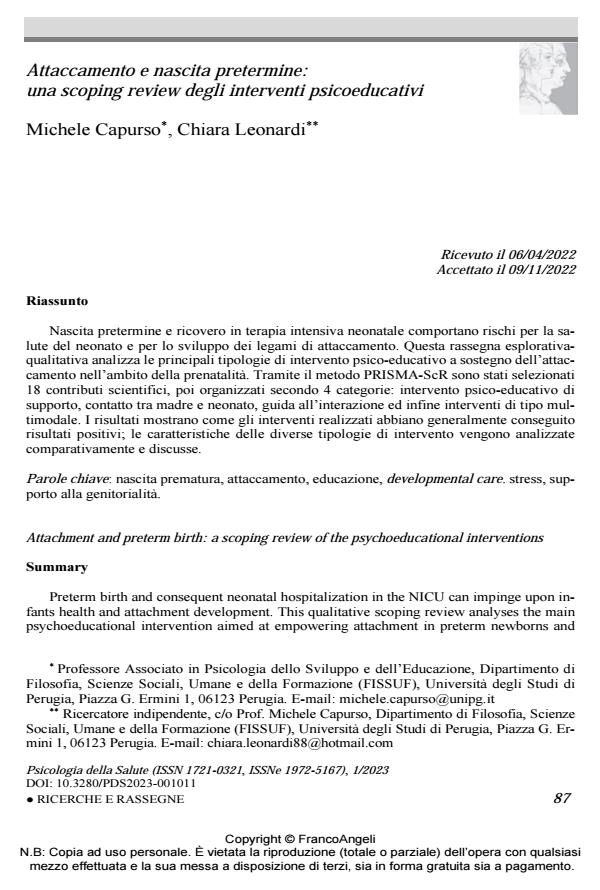Attaccamento e nascita pretermine: una scoping review degli interventi psicoeducativi
Titolo Rivista PSICOLOGIA DELLA SALUTE
Autori/Curatori Michele Capurso, Chiara Leonardi
Anno di pubblicazione 2023 Fascicolo 2023/1
Lingua Italiano Numero pagine 35 P. 87-121 Dimensione file 391 KB
DOI 10.3280/PDS2023-001011
Il DOI è il codice a barre della proprietà intellettuale: per saperne di più
clicca qui
Qui sotto puoi vedere in anteprima la prima pagina di questo articolo.
Se questo articolo ti interessa, lo puoi acquistare (e scaricare in formato pdf) seguendo le facili indicazioni per acquistare il download credit. Acquista Download Credits per scaricare questo Articolo in formato PDF

FrancoAngeli è membro della Publishers International Linking Association, Inc (PILA)associazione indipendente e non profit per facilitare (attraverso i servizi tecnologici implementati da CrossRef.org) l’accesso degli studiosi ai contenuti digitali nelle pubblicazioni professionali e scientifiche
Nascita pretermine e ricovero in terapia intensiva neonatale comportano rischi per la salute del neonato e per lo sviluppo dei legami di attaccamento. Questa rassegna esplorativa-qualitativa analizza le principali tipologie di intervento psico-educativo a sostegno dell’attaccamento nell’ambito della prenatalità. Tramite il metodo PRISMA-ScR sono stati se-lezionati 18 contributi scientifici, poi organizzati secondo 4 categorie: intervento psico-educativo di supporto, contatto tra madre e neonato, guida all’interazione ed infine interventi di tipo multimodale. I risultati mostrano come gli interventi realizzati abbiano generalmente conseguito risultati positivi; le caratteristiche delle diverse tipologie di intervento vengono analiz-zate comparativamente e discusse.
Parole chiave:nascita prematura, attaccamento, educazione, developmental care. stress, sup-porto alla genitorialità.
Michele Capurso, Chiara Leonardi, Attaccamento e nascita pretermine: una scoping review degli interventi psicoeducativi in "PSICOLOGIA DELLA SALUTE" 1/2023, pp 87-121, DOI: 10.3280/PDS2023-001011